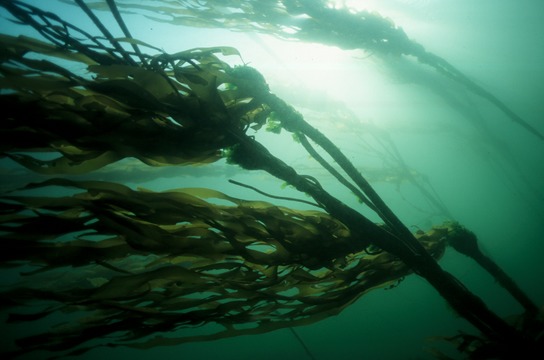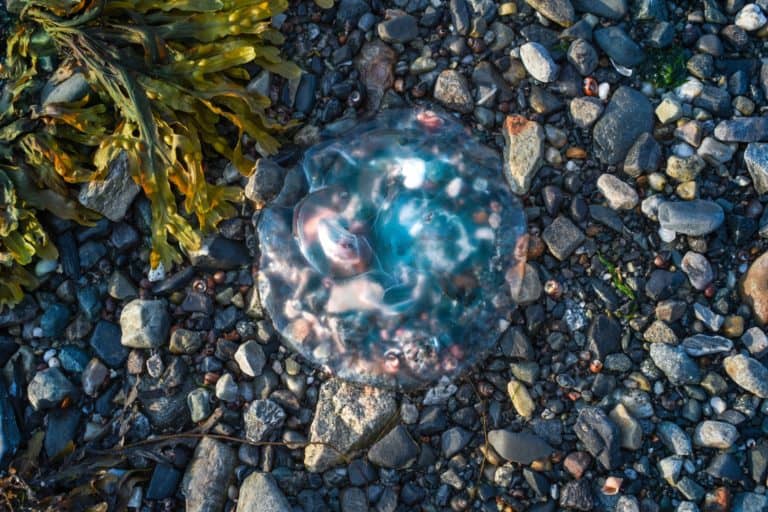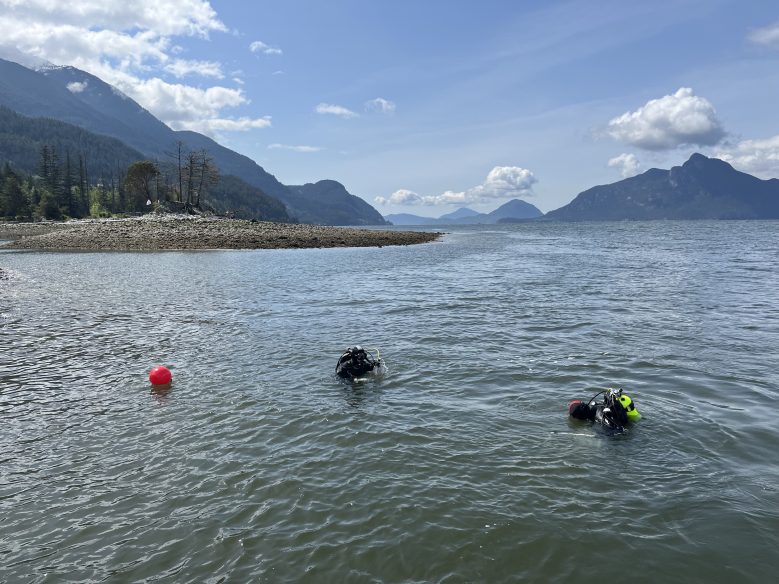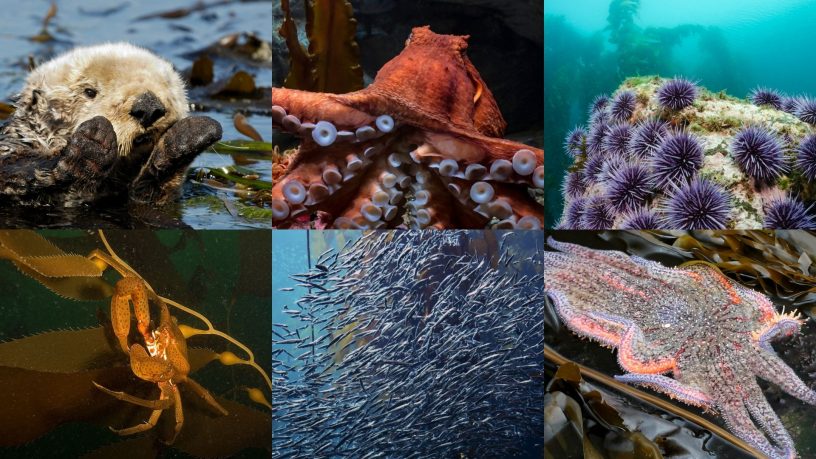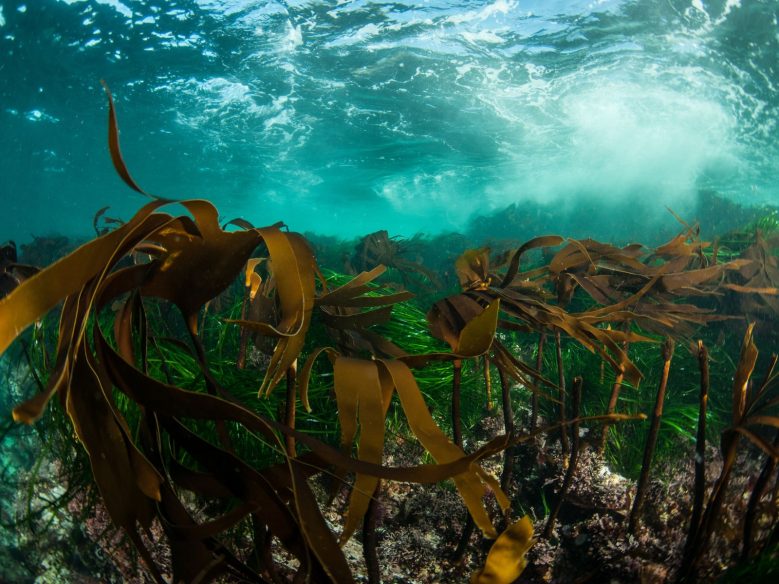Restoring Kelp Forests in the Broken Group Islands

Over the last year, Ocean Wise joined forces with the Tseshaht First Nation and West Coast Kelp to restore kelp in the Broken Group Islands
Located on the west coast of Vancouver Island, the Broken Group Islands are a stunning maze of small isles and rocky reefs scattered across Barkley Sound. Their unique geography creates a dynamic marine environment, where open ocean swells meet sheltered bays. Ideal conditions for kelp forests to thrive.
These ecosystems provide critical shelter, food, and nursery space for hundreds of marine species, including commercially and culturally important species like herring, which rely on kelp to spawn. Kelp forests have sustained coastal First Nations since time immemorial and hold great cultural and economic significance.
Kelp Forests in British Columbia
Across British Columbia, kelp forests are under pressure from climate change, coastal developments, and ecological imbalances. Rising ocean temperatures, driven by marine heatwaves, make it harder for canopy-forming species like giant and bull kelp to survive. Prolonged warming can weaken or eliminate entire forests, leaving ecosystems struggling to recover.
In many areas, kelp also faces another challenge: sea urchins. With the loss of natural predators like sea otters and sunflower sea stars, urchins have expanded unchecked, overgrazing kelp beds and preventing their regrowth.
For the Tseshaht First Nation, whose hahuułi (traditional territory) includes large parts of Vancouver Island’s Barkley Sound, the loss of canopy kelp forests, particularly giant kelp and bull kelp, is deeply concerning.
Recognizing the urgent need for restoration, we partnered with the Tseshaht First Nation and West Coast Kelp to trial a direct kelp restoration approach in the Broken Group Islands by transplanting mature kelp to re-establish lost forests.
Site Selection: Careful Planning and Collaboration
Every successful restoration project starts with careful planning and clear goal setting. Defining success early is crucial, as it guides all steps of the project, from site selection to long-term monitoring.
In the spring of 2024, our team met with James LaFlamme, Fisheries Manager for the Tseshaht First Nation, to identify collaboration opportunities and outline goals for potential restoration sites.
These first meetings set ecological and cultural criteria for selecting candidate sites:
- Tseshaht First Nation territory: Sites needed to be within the Nation’s hahuułi, ensuring that restoration efforts directly supported Tseshaht stewardship of their ancestral waters.
- Historical kelp forests: Preference was given to areas with a documented history of kelp presence, either past or present, increasing the chances of successful regrowth.
- Herring spawning zones: Since herring rely on kelp for spawning, we prioritized sites known for herring activity to help rebuild an essential link in the marine food web and support local food sovereignty.
Following diligent research and consultation, we identified three candidate sites: Lyall Point, Kyen Point, and Capstan Island.
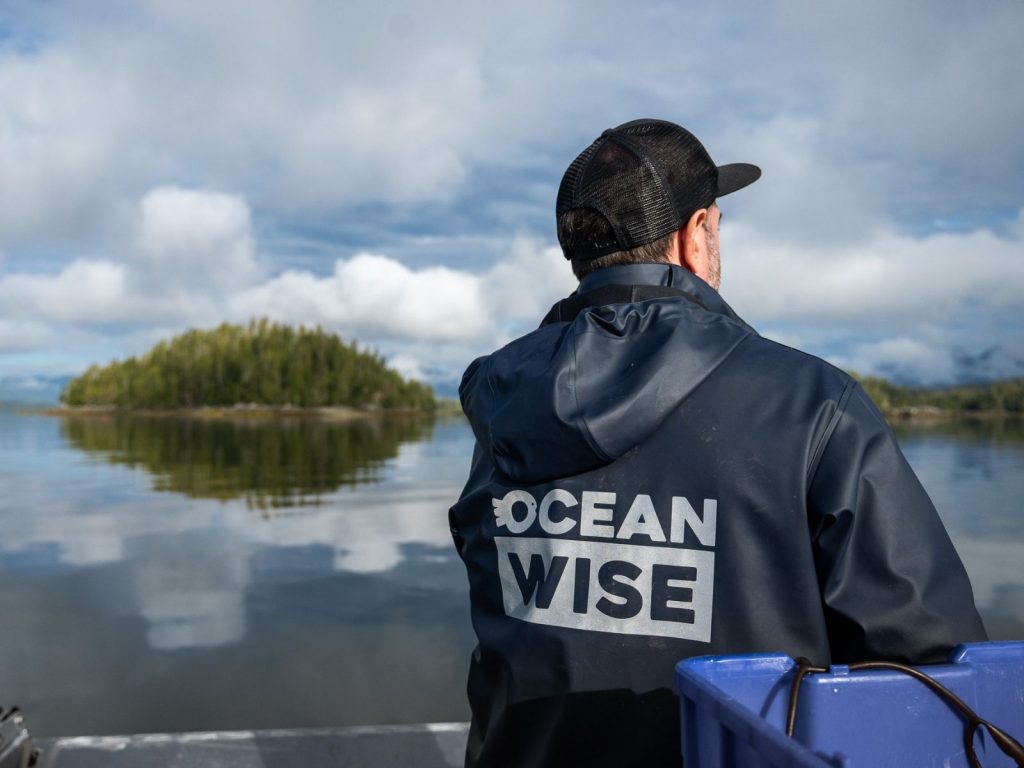
Field Visit: Ground-Truthing Our Research
In July, during the peak of kelp growth, we set out with the Tseshaht Fisheries crew to assess each site. With our wetsuits, GoPro, and inflatable kayak, we jumped into the water to better understand the conditions at each location.
In the water, we evaluated the:
- Presence of kelp: Were there any remaining kelp forests? Which species were present?
- Health of the ecosystem: Was the kelp patchy, diseased, or thriving?
- Seafloor composition: Was the substrate sandy, rocky, or suitable for kelp attachment?
- Urchin density: Were sea urchins or other grazers present, and at what levels?
- Exposure levels: Was the site sheltered from strong currents and storms?
Lyall Point proved too sandy for kelp to grow naturally, and Kyen Point was heavily grazed by urchins. Capstan Island, however, immediately stood out. Although its historical kelp forest had shrunk dramatically, a portion of giant kelp persisted along its western shore. Making it an ideal candidate for restoration.
Capstan Island: A Promising Starting Point
Capstan Island sits on the outer edge of the Pinkerton Islands, between the mainland and the Broken Group Islands National Park.
To establish a baseline, we kayaked around the island, recording water quality, kelp cover, and general site conditions. We also deployed our Remotely Operated Vehicle (ROV) to capture underwater imagery and conduct monitoring transects—randomly placed survey lines used to track changes in the ecosystem over time.
This baseline data will be critical over the coming years. By knowing what conditions were like before our intervention, we will be able to measure progress year after year. And, hopefully, see a return of kelp cover and increased biodiversity. Based on our initial survey, Capstan Island offered a promising starting point for restoring kelp forests in Barkley Sound.

Bringing Kelp Back: Transplanting for Restoration
The process of transplanting kelp is delicate, time consuming, and definitely a little messy. First, we collected mature giant kelp from a nearby kelp farm owned by Chief Anne Mack of the Toquaht First Nation and operated by West Coast Kelp. Preserving the holdfasts, kelp’s root-like structures that they use to attach themselves and grow, we transported the seaweed to our restoration site and began prepping it for transplanting.
Using biodegradable rubber bands, we bound the kelp by their holdfasts to large rocks. Giving each kelp-rock combo a little shake to ensure it was fastened properly before gently dropping it into the ocean.
This method allowed us to pilot a large-scale restoration effort in a more cost-effective way, by leveraging the aquaculture industry’s experience. Together with the Tseshaht Nation and three incredible youth from School District 70, we transplanted nearly 2000 kelps in Barkley Sound in only four days!
We’ll continue returning over the next five years to monitor the growth and health of our restoration sites. We’ve already returned once and are excited to report that the kelp is growing and providing habitat for local species like rockfish.
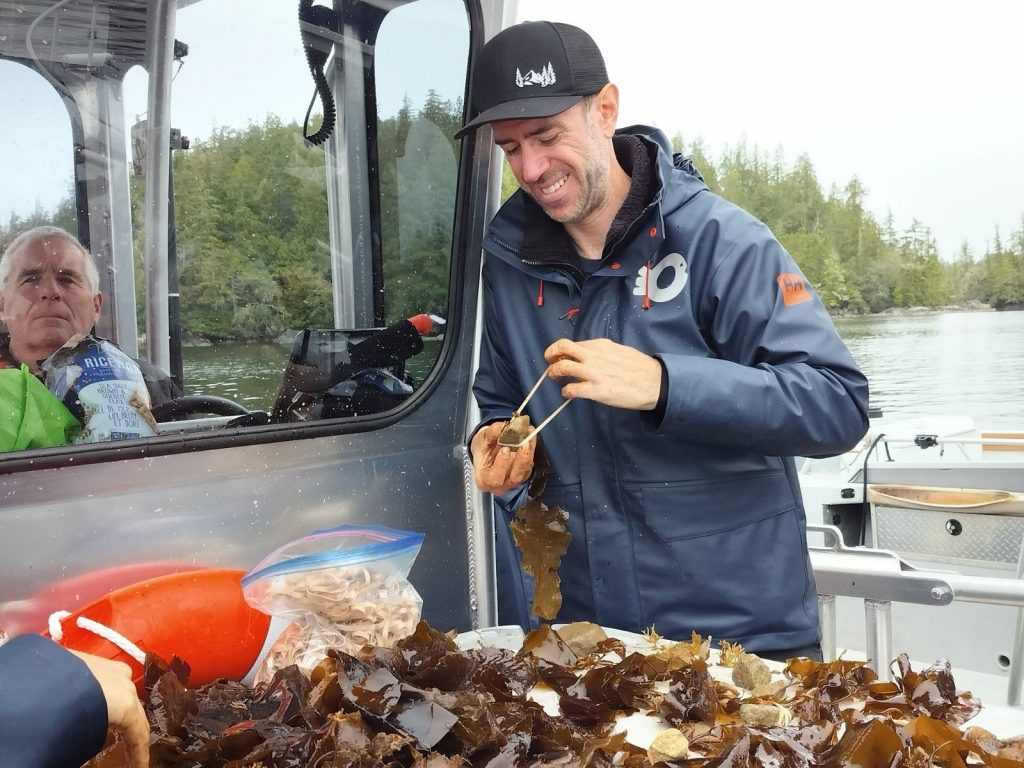
How You Can Support Kelp Restoration
This project is just one of many efforts to restore kelp forests along the Pacific coast. You can help by:
- Supporting organizations and Indigenous-led initiatives focused on Seaforestation.
- Participating in citizen science projects by monitoring local kelp forests and urchin barrens.
- Learning more about kelp restoration and its importance to marine ecosystems.
- Making a donation to support Ocean Wise’s restoration efforts.
With continued partnership and innovation, we can work toward a future where kelp forests thrive once again in the Broken Group Islands, and beyond.
Written by Max Wolf, Ocean Wise Seaforestation Specialist
Posted June 4, 2025 by Kim Bricker


